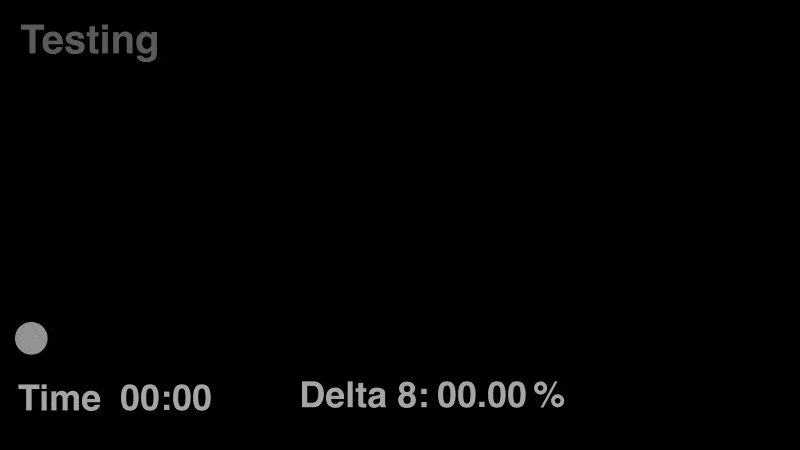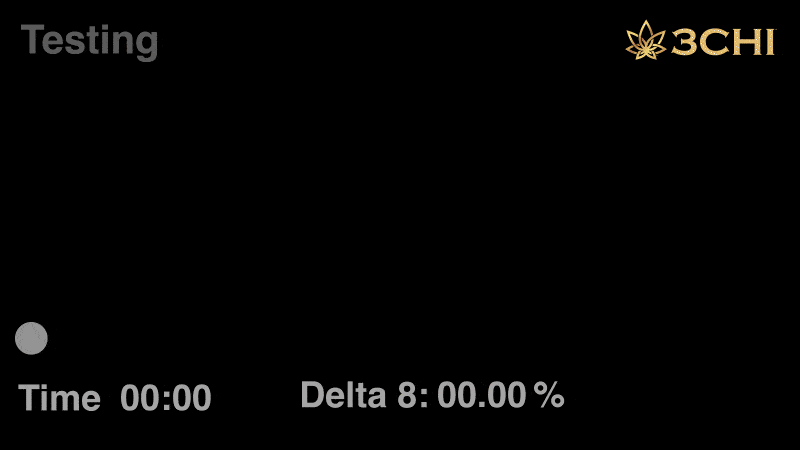D-SPEC Testing

D-SPEC: Open Source HPLC Method for Accurate Cannabinoid Separation in Modern Hemp Products
The rapidly expanding cannabis industry has highlighted the need for more accurate and reliable testing methods for both consumer safety, legal compliance, and learning the effects of different blends of cannabinoids. However, testing methods on today’s new age hemp products like Delta 8 THC fall short, leading to misleading results and misrepresentation of cannabinoid content.
To solve this issue 3CHI internally developed D-SPEC (short for “Delta Specific”), an innovative High-Performance Liquid Chromatography (HPLC) testing method that accurately separates cannabinoids in Delta 8 and similar products. And now, 3CHI is releasing it to accredited labs in an effort to increase testing accuracy and consumer safety.
Accurate Cannabinoid Separation
D-SPEC is an HPLC testing method designed to accurately separate individual cannabinoids, with special attention to the separation of ∆11-THC, ∆9-THC, ∆4(8)-iso-THC, and ∆8-THC. These are the 4 cannabinoids that most often cause inaccurate testing.
There is a version for Delta 8 products and a slightly modified one for THCO/∆8o/∆9o products. This method allows for a broader range of cannabinoid identification, ensuring that products are accurately represented in terms of content, potency, and legality.
Although longer, the just under 30-minute DSPEC test is a significant improvement over current shorter run-time methods, which often fail to provide proper separation of cannabinoids. The increased testing time is one thing that aids the precise identification of each cannabinoid present in the sample, as well as a more accurate measurement of their concentrations. This improved accuracy helps protect retailers from unknowingly selling illegal products and consumers from purchasing products with misrepresented purities and concentrations.
Why You Need D-SPEC in Your Lab
Many HPLC testing methods struggle to separate individual cannabinoids from one another, resulting in inaccurate measurements of concentrations and impurities.
As shown in the GIF below, cannabinoids can be hidden within single peaks, causing existing testing methods to misrepresent purities and concentrations. This all-too-often occurrence can lead to non-compliant marijuana products being mistakenly identified as hemp products. By implementing D-SPEC in your lab, you can avoid these pitfalls and provide accurate, reliable testing results to your clients, while also ensuring you’re only green-lighting quality, legal Delta 8 products to consumers.

EXPLAINING THE GIF
The gif above shows a competitor’s product we tested using D-SPEC to verify results. The competitor was listing a COA from an accredited lab showing 93% ∆8 and 0% ∆9 in the report.
Testing 1. – When labs run an inaccurate HPLC method, especially when the run times are too short, they may get a singular peak on the chromatogram that elutes at the same time as multiple reference standards, like ∆8 and ∆9. The lab then has to make a choice: “do I call this all ∆8 or all ∆9”. This is the first sign a new method should be run.
Testing 2. – This two-peak scenario (with or without various amounts of shouldering) illustrates the results many labs appear to produce. The issue here is that the leading peak/shoulder will typically appear where ∆9 elutes, along with a host of other cannabinoids, so labs are again faced with a decision on what to identify the peak as. We’ve seen labs call this ∆9 and others say it’s not ∆9. The truth is, the method isn’t good enough to accurately say one way or the other. For example, with our Gold ∆8 oil, which is consistently under 0.1% ∆9-THC, this peak would primarily be made up of approximately 4% ∆4(8)-iso-THC. Yet some labs report this as 4% ∆9 and another lab may report the peak as unknown because they don’t have reference standards for ∆4(8)-iso-THC or ∆11-THC, which also causes interference in some cases.
Testing 3. – This shows D-SPEC’s chromatogram of the same sample. While the peaks in the animation aren’t to exact scale, you can see D-SPEC was able to separate out what was reported as 93% ∆8 into seven different cannabinoids, with baseline separation, whose totals added up to 93%. Not only was this product far less pure than advertised (68% ∆8, 25% less than advertised), and not only did it have unknowns that we couldn’t verify as cannabinoids, but it was far above the legal limit of 0.3% ∆9 putting both customers and stores unwittingly in the situation of possessing and/or distributing of Schedule I narcotics.
Transform Your Lab with D-SPEC
By incorporating D-SPEC into your lab’s testing procedures, you can set a new standard for quality, accuracy, and compliance in the cannabis industry. As an educational tool, D-SPEC can help raise awareness about the challenges and limitations of current Delta 8 testing methods, empowering both the testing community and the general public with a deeper understanding of this important issue.
3CHI is committed to making D-SPEC available for download to crime labs and registered members of the testing community, enabling labs to harness the power of this method and improve their testing accuracy. By adopting D-SPEC in your lab, you can contribute to a safer and more transparent cannabis market.
Additionally, we hope this sparks additional efforts by others in the testing community to improve upon D-SPEC in ways such as run-time or other limitations that may arise as this industry continues to evolve. We also hope that others will continue to share their testing methods publicly so that this industry can continue to improve at the same pace as the new cannabinoid production is moving.
To join the movement toward excellence in hemp-derived cannabinoid testing and help make a difference in the cannabis industry please apply for D-SPEC here:
